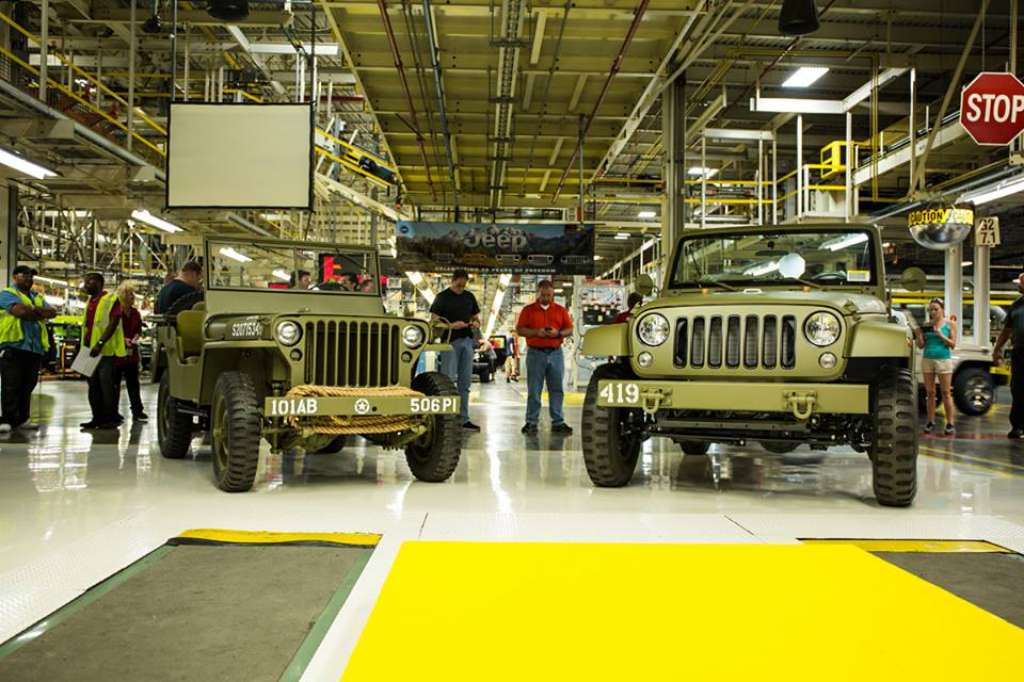On the 15th July 1941, the US government awarded Willys-Overland a contract to supply 18,000 Willys MB’s to the military. This little Go-anywhere, do-anything vehicle soon became an absolute favourite with the serving men and was affectionately known as the “Jeep” a phonetic representation of GP.
Way past WWII, this vehicle has had a place in the hearts of many a military man and after the war, they were every bit a popular. They were adapted for almost every kind of civilian use from family runabouts to serious conservation and semi-military uses.
This year marks the 75th Anniversary of the first vehicles to roll off the production line, and Jeep has produced a commemorative model to mark this auspicious occasion. The commemorative model is being built at the Toledo plant, and it is regrettable that there will only be one built, and there are no plans to release it to the public.
The vehicle is built on the current Wrangler Sport underpinning, but the factory has been careful to ensure that the vehicle matches the original styling, so it has no doors, no B-pillars, and no roll bars but it does have period correct hood latches, steel bumpers and canvas seats. It has been painted in the original military olive green and has the number 419 stencilled on the front bumper. The wheels are steel 16”rims clad with military-style rubber.
Jeep released a brief history of the Jeep and while many may know this history; it is still an interesting read.
“In July 1940, the U.S. military informed automakers that it was looking for a “light reconnaissance vehicle” to replace the Army’s motorcycle and modified Ford Model-T vehicles. The Army invited 135 manufacturers to bid on production and developed a lengthy specification list for the vehicle, including a 600-lb. load capacity, wheelbase less than 75 inches, height less than 36 inches, smooth-running engine from 3 to 50 miles per hour, rectangular-shaped body, four-wheel drive with a two-speed transfer case, fold-down windshield, three bucket seats, blackout and driving lights and a gross vehicle weight below 1,300 lbs.
At first, Willys-Overland and American Bantam Car Manufacturing Company were the only two companies answering the call. Soon, however, Ford Motor Company entered the picture, and competition began among the three over which company would receive the lucrative government contract. Each company produced prototypes for testing in record time. The Army took possession of these vehicles in November 1940 at Camp Holabird, Maryland. Each of the three designs exceeded the Army’s specification of 1,300 lbs., but the Army soon realized that limit was far too low and raised it for the next round of vehicles.
The Army issued the next round of contracts in March 1941. Bantam was to produce 1,500 Model 40 BRC vehicles, Ford would build 1,500 modified and improved GP Pygmies and Willys would build 1,500 Quads. Further testing and evaluation led to the Army’s selection of the Willys vehicle as the standard.
With modifications and improvements, the Willys Quad became the MA, and later the MB. But the Army, and the world, came to know it as the Jeep. In 1941, the Willys MB began rolling off the assembly line straight into the heat of battle and the rest is history.”
